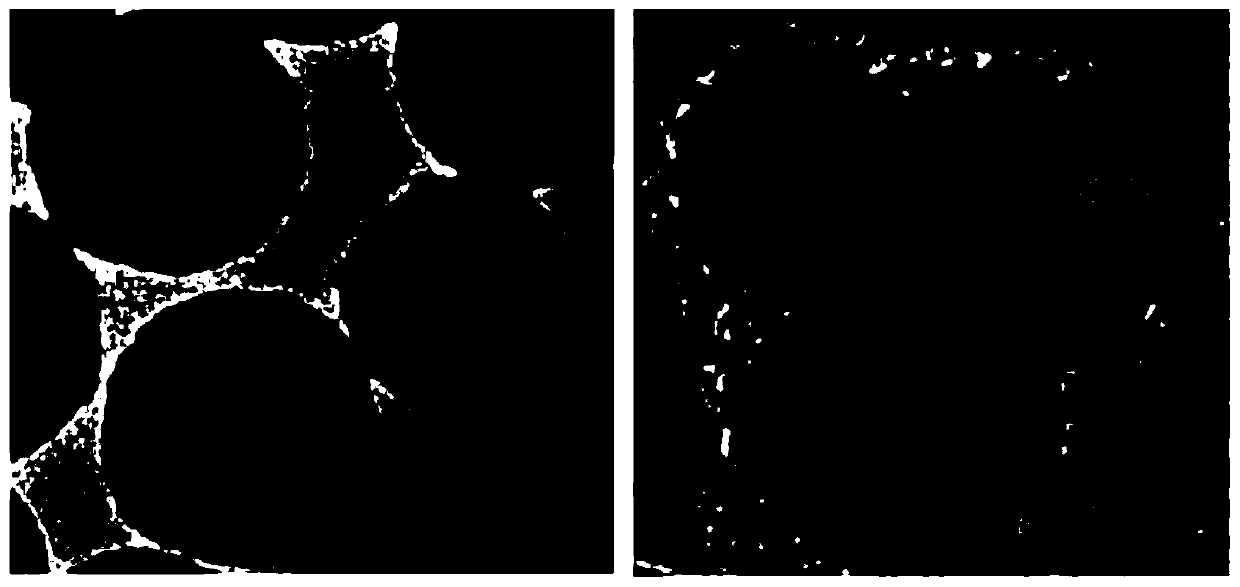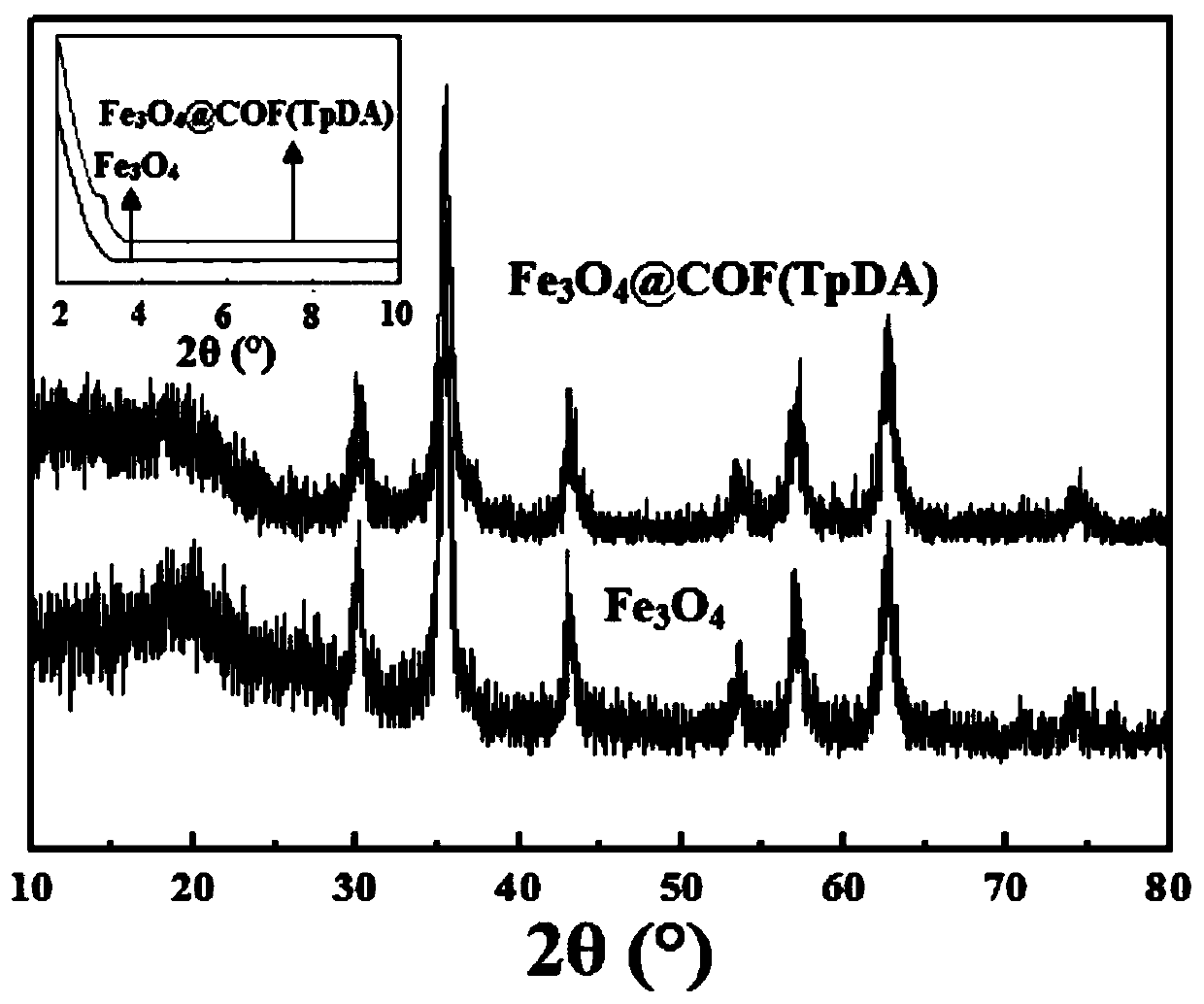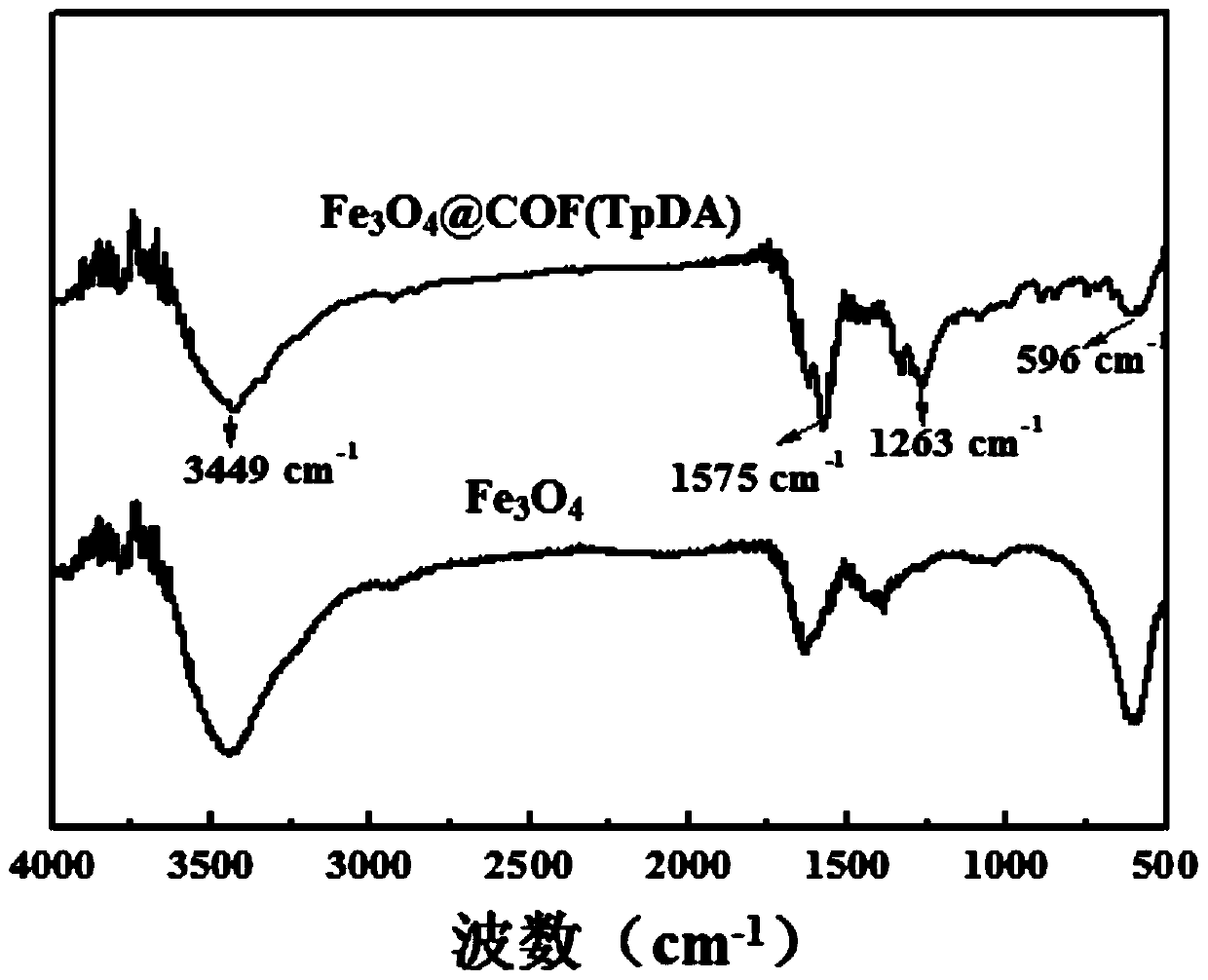Magnetic solid-phase extraction method of detecting ethoxyquine in fruits and vegetables
A plant growth regulator and magnetic technology, applied in chemical instruments and methods, measuring devices, alkali metal compounds, etc., can solve the problems of long extraction time, large amount of adsorbent, low sensitivity, etc., and achieve good extraction effect and stable structure. Good sex, easy to use effect
- Summary
- Abstract
- Description
- Claims
- Application Information
AI Technical Summary
Problems solved by technology
Method used
Image
Examples
Embodiment 1
[0045] Preparation of Fe 3 o 4 @COF(TpDA) adsorbent, the steps are as follows:
[0046] 1. Fe 3 o 4 Preparation of nanoparticles
[0047] 1.35g FeCl 3 ·6H 2 O, 3.85 g NH 4 OAC and 0.40 g of sodium citrate were dispersed in 70 mL of ethylene glycol and mixed by magnetic stirring for 1 h at room temperature to generate a homogeneous solution. The resulting solution was transferred to a 100 mL reaction kettle, and then heated to 200 °C for 16 h. After cooling to room temperature, the product was collected with an external magnet and washed several times with ethanol and water until the supernatant was clear. Finally, the product was vacuum-dried at 60°C to obtain Fe 3 o 4 Nanoparticles.
[0048] 2. Fe 3 o 4 Preparation of @COF(TpDA)
[0049] 63.0mg Tp, 107.2mg DA and 80mg Fe 3 o 4 Nanoparticles were dispersed in 3 mL of dioxane. Transfer the mixture to a pressure-resistant tube, then quickly freeze the pressure-resistant tube in a liquid nitrogen bath, evacuate t...
Embodiment 2
[0056] With the Fe prepared in Example 1 3 o 4 @COF(TpDA) is an adsorbent, and the process conditions for detecting PGRs are screened, and the steps are as follows:
[0057] 1. Standard solution preparation
[0058] Weigh 10mg of IAA, IPA, IBA, 1-NAA, 2-NAA, 1-NOA and 2-NOA respectively, dissolve them in 10mL of acetonitrile respectively, and make PGRs standard solution with a concentration of 1mg / mL, put Store in a refrigerator at 4°C, protected from light, for later use.
[0059] 2. Chromatographic conditions
[0060] Chromatographic analysis was performed on an Agilent 1260 HPLC (Agilent Corporation) equipped with a diode array detector. Separation of PGRs was performed on a Hypersil GOLD C18 column (150 x 4.6 mm, 3 μm). 5% aqueous acetonitrile (A) and pure acetonitrile (B) were selected as mobile phases. Gradient elution was used for elution, and the program was (volume fraction): starting from 30% B, increasing to 34% B within 2 minutes, and maintaining for 11 minut...
Embodiment 3
[0073] The optimization method step that above-mentioned embodiment 2 screens obtains is as follows:
[0074] 1. Preparation of standard solution or sample solution
[0075] Weigh 10mg of IAA, IPA, IBA, 1-NAA, 2-NAA, 1-NOA and 2-NOA respectively, dissolve them in 10mL of acetonitrile respectively, and make PGRs standard solution with a concentration of 1mg / mL, put Store in a refrigerator at 4°C, protected from light, for later use.
[0076] Cut the fruit or vegetable samples into small pieces and crush them, weigh 5g of the samples and 6mL of methanol and transfer them to a 10mL centrifuge tube, sonicate it for 40min, then centrifuge the centrifuge tube at 4000rpm for 10min, and collect the supernatant. The sample was extracted three more times using the same procedure, and the combined extracts were dried with nitrogen to remove most of the methanol (because PGRs have low solubility in water, a small amount of solvent should be kept to ensure complete dissolution of the anal...
PUM
| Property | Measurement | Unit |
|---|---|---|
| wavelength | aaaaa | aaaaa |
| thickness | aaaaa | aaaaa |
| specific surface area | aaaaa | aaaaa |
Abstract
Description
Claims
Application Information
 Login to View More
Login to View More - R&D
- Intellectual Property
- Life Sciences
- Materials
- Tech Scout
- Unparalleled Data Quality
- Higher Quality Content
- 60% Fewer Hallucinations
Browse by: Latest US Patents, China's latest patents, Technical Efficacy Thesaurus, Application Domain, Technology Topic, Popular Technical Reports.
© 2025 PatSnap. All rights reserved.Legal|Privacy policy|Modern Slavery Act Transparency Statement|Sitemap|About US| Contact US: help@patsnap.com



